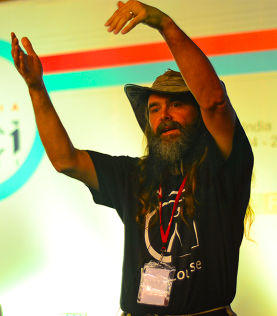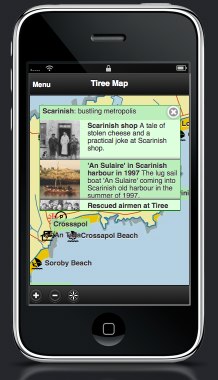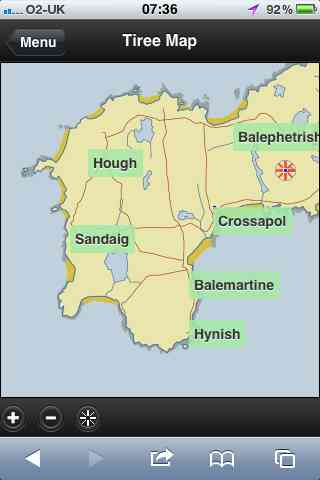 I have started to read “Unwrapping Christmas” (David Miller ed.) a collection about the modern celebration of Christmas from an anthropological and sociological perspective.
I have started to read “Unwrapping Christmas” (David Miller ed.) a collection about the modern celebration of Christmas from an anthropological and sociological perspective.
So far I have read just the first two chapters: an attempt to synthesise ‘A Theory of Christmas‘ by Miller and a translation of Lévi-Strauss’ 1952 article on ‘Father Christmas Executed‘ (Le Père Noël supplicié). These have been fascinating both in their intentional insights into Christmas, but also their unintentional insight into mindset of social-anthropology, the foundational myths of the area
I came across the book as it was mentioned in an article I was reviewing and I realised it is something I should have read years ago when I was first writing about virtual Christmas crackers many years ago1.
It was published in 1993, and both Christmas, as a global festival, and anthropology/sociology have developed since then, so in some ways a snapshot from 20 years ago. It would, not least, be interesting to see an update on post-9/11 Christmas in Islamic countries
Miller starts his investigation into a ‘theory’ of Christmas by noting that anthropologists take a largely ‘synchronic’ view of phenomena, “detailed observations of current practices” as opposed to folklore research, which is more focused on “survivals”. However, despite this, he allows himself an historical detour.
He starts, as is traditional, with the Roman midwinter festivals. However, I had not realised that there were several of these, deriving it appears (based a little wider reading, not Miller) from a variety of different pre-Roman, midwinter traditions possibly dating back to Babylonian times. First there was Kalends2, which was known for present giving, unusual, freedoms for slave and child, and holding lightly to money. Second, there was Saturnalia, a period of feasting and gluttony, which even in Roman times was seen as “crass materialism”. Finally, there is the latecomer Dies Natalis Solis Invicti, the Sun God’s feast, set on 25th December.
The last is the reason I have always heard for the choice of the date of Christmas, a deliberate borrowing of a popular pagan festival, and then ‘Christianising’ it in the same way that many churches were built on pagan religious sites. Except, when I started to look a little more deeply at this, I found that this account, that I had always heard, is now challenged, by a more modern account based on the earlier supposed date of conception of Jesus (the Annunciation)3.
The evidence for either derivation appears at best circumstantial and partial, and whether or not Christmas was deliberately dated to coincide with these pagan festivals, the driving force of midwinter festivals, the need for consolation in darkness and the hope of new light, is undoubtedly also one of the reasons for the ongoing popularity of Christmas. Furthermore, it is undoubtedly the case that many rituals connected with the Christian Christmas, such as the Christmas tree, are deliberate or accidental adoptions of pre-Christian symbolism.
However, the origins and strength of the academic myth of the pagan date of Christmas, whether or not it turns out to be true, is an interesting story in itself. It appears to have arisen in the 18th and 19th centuries. During this time and running into the early years of the 20th century, there was a popularity for studies of folklore and myth to seek syncretic origins, to see common underlying mythic stories across all cultures. I guess Freud and Jung can be seen as part of the tail-end of this tradition.
This can be seen as a modernist agenda, albeit with a slight trace of the Victorian love of occult, seeking singular causes, and seeing all ancient accounts as not just mythic, but entirely fictional. This hyper-scepticism was severely challenged by Calvert and Schliemann’s discovery of Troy in the 1860s4, which had been believed to be purely mythical. Now-a-days historians take a critical but more open-minded approach to documentary evidence, but the remnants of Victorian hyper-scepticism were still evident in Biblical scholarship, certainly until the late 20th century.
Miller ends up with a two-stranded theory.
 One strand is externally focused on the carnival aspects of Christmas as a way to connect to a wider world, and through a temporary overturning of order with (almost Easter-like, but to my mind stretched) echoes of the killing and renewal of the Lord of Misrule. A more cynical view of carnival, might be of a periodically sanctioned inversion of establishment, in order to channel and control dissent. However, Miller offers a more generous life affirming view.
One strand is externally focused on the carnival aspects of Christmas as a way to connect to a wider world, and through a temporary overturning of order with (almost Easter-like, but to my mind stretched) echoes of the killing and renewal of the Lord of Misrule. A more cynical view of carnival, might be of a periodically sanctioned inversion of establishment, in order to channel and control dissent. However, Miller offers a more generous life affirming view.
The second strand is internally focused on family, and in particular the nuclear family. Miller sees this as a response to society under threat; in modern times in response to “the threat posed by the sheer scale of materialism“. That is, if I have understood right, Christmas as reaction against, rather than slave to, market culture.
As an investigation of the global secular Christmas, the account makes virtually no reference to religious origins of Christmas. Indeed, the desire to distance itself from Christian theology and symbolism is sometimes arcane. At one point Miller suggests that:
“The birth (sic) of Christmas is itself an attempt to anthropomorphize the divinity in the form of the domestic family unit …”
This is stated with no reference to incarnation, or the origins of the early celebration of Christmas when theology of Christ’s humanity and divinity were being contested. I could not decide whether this was deliberate irony or culpable ignorance.
The relation between Christmas as religious rite and secular festival is not only problematic for the anthropologist. Church writers decried the intemperate and potentially licentious festivities throughout the first millennium, and Christmas was banned entirely in Puritan England. Within living memory, Christmas Day was a normal working day in the Calvinist Protestant areas of Scotland, and in the 1970s there was a campaign to “put Christ back in Christmas“, not least in reaction to the growing use of ‘Xmas’. Many Christians find the figure of Father Christmas problematic. At the very best there is a fear of confusing children, captured perfectly in ELP’s “I believe in Father Christmas“:
They sold me a dream of Christmas
They sold me a Silent Night
And they told me a fairy story
‘Till I believed in the Israelite
And I believed in Father Christmas
And I looked to the sky with excited eyes
‘Till I woke with a yawn in the first light of dawn
And I saw him and through his disguise
At worst Father Christmas, often with attendant fairies and pixies, is seen as verging on the demonic.
Conflict between secular and religious Christmas seems particularly strong in the US with, it appears from this side of the Atlantic, endless tales of cribs or Christmas trees being banned from schools or public places for fear of hurting the feelings of other religions (which almost universally seem to reject any problems), not to mention the anodyne ‘Happy Holidays’. However, similar stories hit the news in the UK also, with one Vicar suffering the ire of the national media for telling school children about the (somewhat gruesome) historic origins of Saint Nicholas, and in so doing undermining their faith in Father Christmas5:
“… horrified parents said the talk would give their children nightmares and make them start to disbelieve in the magic of Father Christmas and his reindeer.”
Lévi-Strauss’ ‘Father Christmas Executed‘ picks up precisely one such point of Christmas conflict in Dijon in 1951, when the local clergy publically burnt an effigy of Father Christmas. It appears, from the France-soir report that Lévi-Strauss quotes, that the children actively took part in this mock execution, so maybe French children in the 1950s were made of stronger stuff that UK children today. Naughtily, I cannot but help think that the Dijon clergy may have unwittingly captured the neo-pagan spirit of the burning of wicker men. Certainly the France-soir reporter saw some of the irony of the situation noting that, “Dijon awaits the resurrection of Father Christmas“, who was to speak from the Town Hall roof later that evening.
Writing in 1952 Lévi-Strauss is fascinated by the ostensive rejection of American culture and values in France, and yet the speed at which American Christmas had infiltrated French nativity. He attributes this to ‘stimulus diffusion’, where the external system (American Christmas) evokes pre-existing ideas or needs.
He makes excursions across various related beliefs and ceremonies, including, inevitably, Saturnalia, but also, in passing, mentioning the display of antlers in Renaissance Christmas dances, prefiguring Santa’s reindeer (Herne and the Wild Hunt transfigured to Rudolph with his nose so bright). However, eventually settles that the “beliefs linked to Father Christmas relate to the sociology of initiation (and that is beyond doubt)“, based partly on practices of Pueblo Indians placating the spirits of past dead children by giving gifts to their own live children, the lessons from which “can be extended to all initiation rites and even all occasions when society is divided into two groups.” — well, of course.
As an example of a literature-based study of homo anthropologist, I found the following statement particularly fascinating:
“Explanations in terms of survivals are always inadequate. Customs neither disappear nor survive without reason. When they do survive, the reason is less likely to be found in the vagaries of history than in the permanence of a function which analysing the present allows us to discover.”
The discussion of the Pueblo Indians is deemed powerful precisely because there are no historical connections and therefore any (strained) parallel is connected to deep underlying human needs and aspirations, the “most general conditions of social life.”
Ignoring the validity of the analysis of Christmas, itself, one cannot help but see the parallels with the Victorian folklorists desire for deep universal structures. Of course, here there are, in addition, historical cultural connections within academia, but also this desire for the singular casual explanation is surely one of the “general conditions of academic life.”
As mentioned, writing in 1993, 40 years after 1952 Lévi-Strauss’ article, Miller starts by noting a ‘synchronic’ focus of anthropologists, and in the list of contributors Lévi-Strauss is described (and undoubtedly was) “the most distinguished anthropologist of his generation“.
It almost feels as though the quote from Lévi-Strauss is a statement of a foundational myth of the discipline.
The statement is not absolutist, indeed in ‘Father Christmas Executed‘ Lévi-Strauss triangulates his synchronic analysis of Christmas with a diachronic excursion into Abbé de Liesssse, Julebok and the Lord of Misrule amongst others. However, note the emphasis of the statement, “less likely to be found in the vagaries of history than in the permanence of a function“, gives a primacy to ahistorical accounts.
Ethnography developed as a recording of people’s behaviours and customs without imposing external values or systems of thought, the cultural equivalent of a physical observation, but with the understanding that the observer needs to get inside the subjective experience of the participants. This methodological focus has perhaps transposed into an ontological one, the importance methodologically of focusing on the present, becoming a primacy of the present, the avoidance of external value systems tainting historical analysis.
Maybe the field has also been wary of ubiquitous historical determinacy such as colonial accounts of the inevitability and superiority of 19th century civilisation, Marxist belief in its inevitable downfall, or the more recent narratives of western democracy.
However as rhetoric, this ahistorical focus feels rather like pre-ecological biology. A simple view has animals evolving to fit into environmental niches, just as Lévi-Strauss sees American Christmas ideas finding a place in a French cultural niche. However, biological systems are now seen as reflexive, co-evolutionary, the environment is shaped by the species just as the species is shaped by the environment.
This is a less comfortable and less stable world that challenges the enduring Darwinian myth of optimality. Species (including humans) are no longer the best possible creatures for their environment but historically contingent and part of an ongoing dynamic.
Similarly cultural practices do not simply sit upon universal human and social functions as a singular causation, but those functions, the underlying human needs, change due to the practices in which we as individuals and as societies engage.
 The weakness of ignoring this can be seen in Miller’s view of Christmas in relation to the nuclear family. To the early readers of Matthew and Luke’s gospels, the story of the woman giving birth away from extended family must surely have been strange if not shocking. Indeed early icongraphy is much more focused on mother and child than the classic modern family crib scene (although both are found, and the history of woodworking tools is indebted to depictions of Joseph the carpenter).
The weakness of ignoring this can be seen in Miller’s view of Christmas in relation to the nuclear family. To the early readers of Matthew and Luke’s gospels, the story of the woman giving birth away from extended family must surely have been strange if not shocking. Indeed early icongraphy is much more focused on mother and child than the classic modern family crib scene (although both are found, and the history of woodworking tools is indebted to depictions of Joseph the carpenter).
However, if we imagine recently industrialised and urbanised 19th century Britain, with extended family often far away in the country, or recent migrants or settlers in the US, the non-traditional nativity scene must surely have framed and helped build the very notion of nuclear family. This is particularly obvious in the account of Christmas in Laura Ingalls Wilder’s “Little House on the Prairie“.
Similarly, is the global popularity of Christmas also in part due to the 18th and 19th century combination of colonisation and missionary movements that helped establish globally what we now deem to be ‘universal’ ideas of ethics and rights; ideas, of course, derived in no small part from the Christmas story? Although, in their part, these ideas maybe had impact precisely because they touched universal needs in the human heart.
- To try out virtual crackers go to vfridge.com/crackers/, to read about them see my chapter “Deconstructing Experience – pulling crackers apart” or shorter Interactions article “Taking fun seriously“.[back]
- Strictly, Kalends were the end of any month, but there appeared to be particular celebrations at the end of December.[back]
- For more discussion of the date of Christmas see The Date of Christmas and Epiphany and Catholic Encyclopedia: Christmas.[back]
- The Wikipedia page on Troy describes the early archaeology, but not the previous scepticism, which is in more detailed accounts. [back]
- Vicar tells primary school children Santa Claus is NOT REAL and reveals gruesome legend. Express, 12 Dec 2013. [back]









 The
The 



